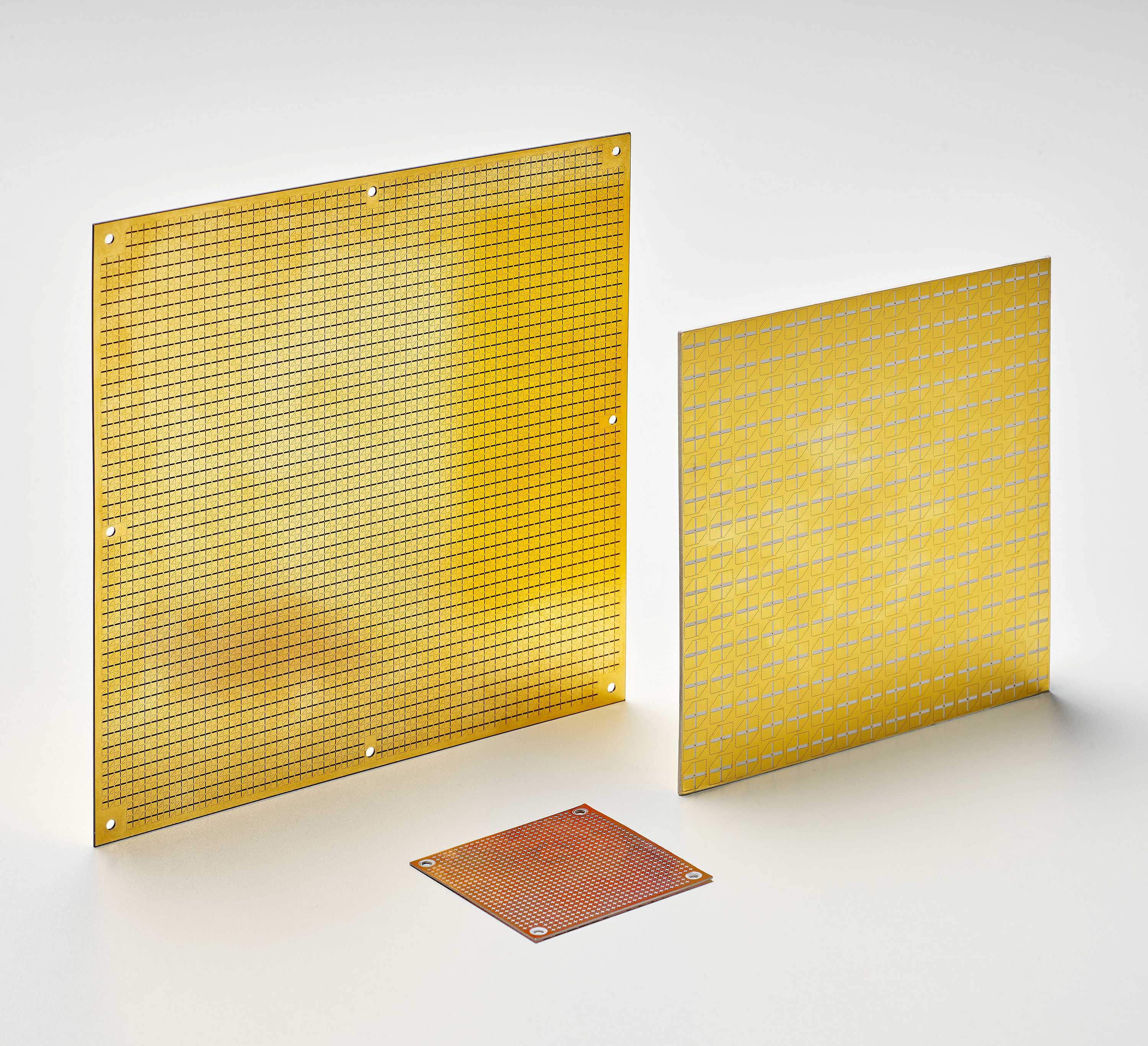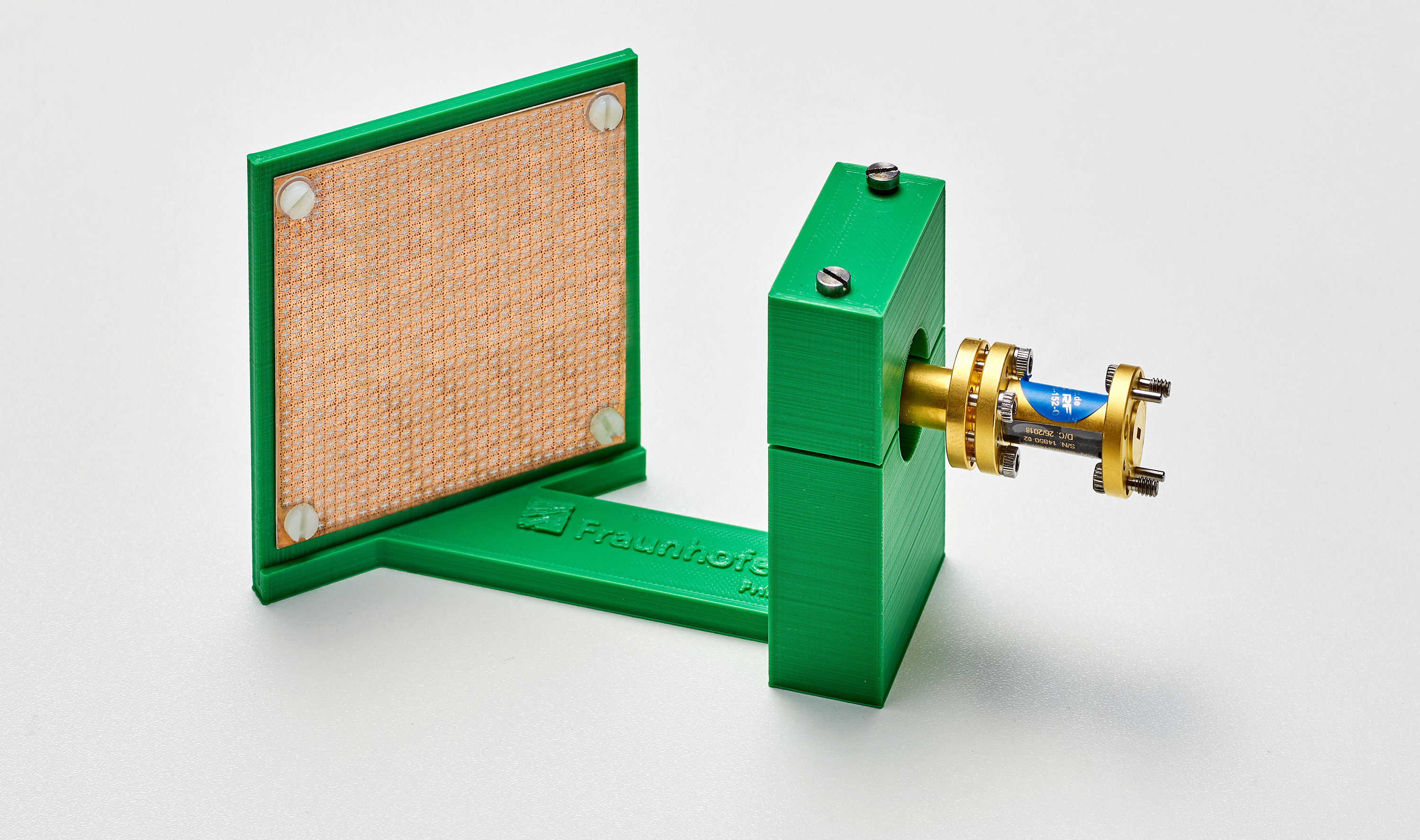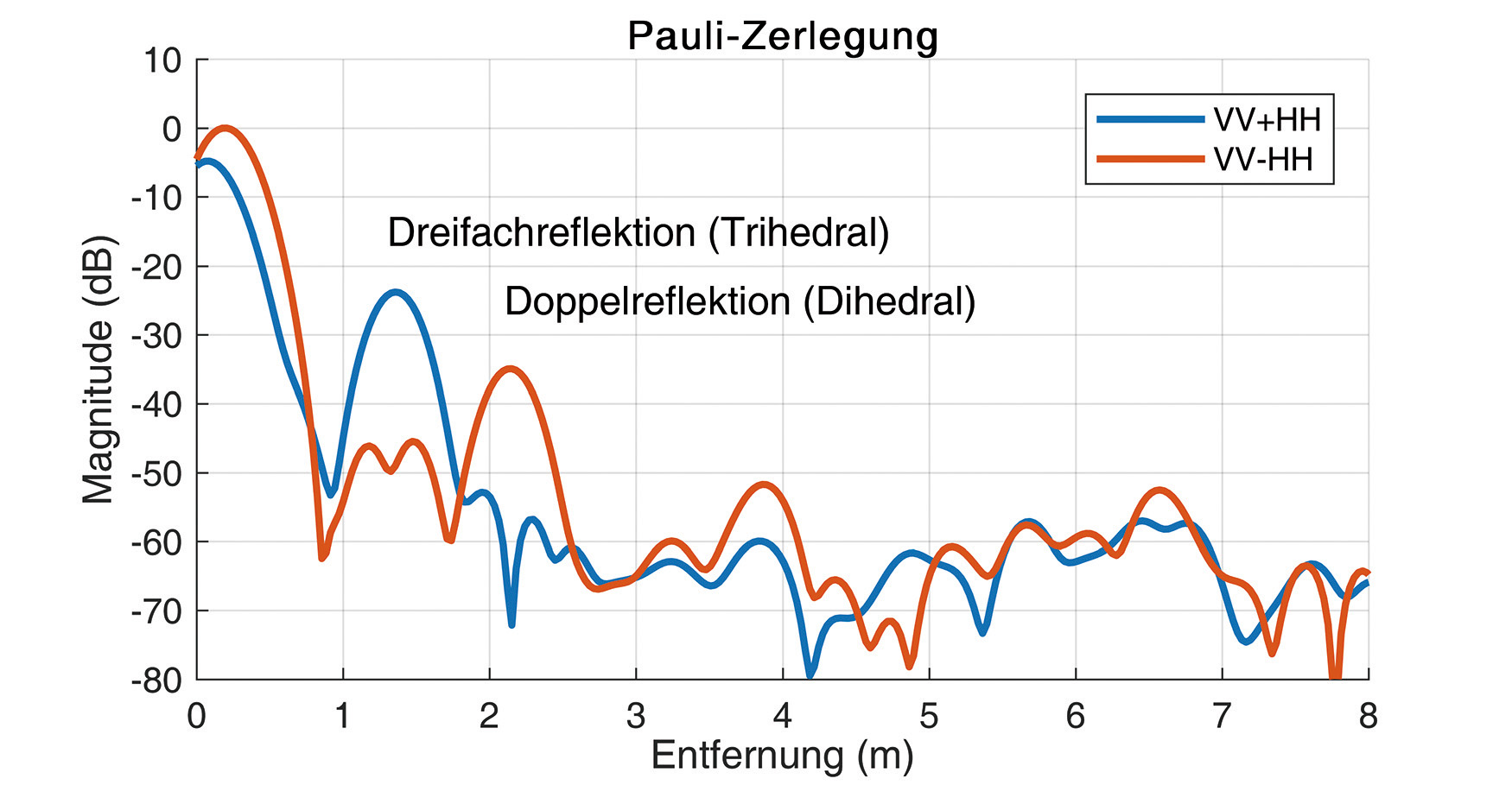Polarimetry with PERFORM
The use of the polarization of electromagnetic waves for radar measurements offers great potential for the detection and classification of targets in heterogeneous scenes. PERFORM makes radar polarimetry available at a low cost and allows for a later integration into existing systems.



Even for modern radar systems, the detection, distinction, and characterization of radar targets always presents a particular challenge when these radar targets are located in a very heterogeneous environment. Radar polarimetry is showing promise in this area, as it is capable of characterizing radar targets to a significantly larger extent than conventional radars.Auch für moderne Radarsysteme ist das Erkennen, Unterscheiden und Charakterisieren von Radarzielen immer dann eine besonders große Herausforderung, wenn sich diese in einer sehr uneinheitlichen Umgebung befinden. Vielversprechend ist hier die Radarpolarimetrie. Sie kann Radarziele wesentlich umfangreicher charakterisieren als konventionelle Radare.
Every object scatters a radar signal back in its own characteristic manner. All radar systems use this physical principle: They use various signal processing algorithms to determine the distance, speed, position, size, and/or shape of the radar target based on the reflected signal. The more heterogeneous the radar scene is, higher shall be the complexity in separating and filtering the superimposed reflected waves undergoing different scattering mechanisms. Polarimetric radars can distinguish targets better from each other and identify them in these types of situations. Unlike conventional radars, differently polarized high-frequency signals, i. e. electromagnetic waves with different directions of oscillation, are transmitted and received by polarimetric radars. Due to scattering and propagation mechanisms, there is a characteristic change in the polarization. The polarization separation at the receive side and the subsequent polarimetric analysis by means of suitable decomposition procedures allow for the identification and classification of objects and propagation phenomena. This significantly increases the contrast range of a scene. It is even possible to detect concealed targets not recognizable with classical sensors, as long as they change the polarization of the incoming wave.
This principle is already being applied in remote sensing and for weather radars. In remote sensing, this allows for the discrimination and classification of radar targets such as artificial infrastructure developments and vegetation or for the separation and characterization of different landscape and vegetation features in precision farming. Meteorological radar systems use polarimetry to detect different precipitation particles in order to distinguish between hail and rain, for example. However, current polarimetric radar systems are complex and more expensive as well as more prone to failure than conventional radars because of the significant additional hardware requirements.
For this reason, with PERFORM, Fraunhofer FHR has developed a purely passive reflector that can be placed in front of the transmitting and/or receiving antenna of a radar system and changes the polarization of the electromagnetic waves without additional switches or transmit and receive paths. The control of the polarization is solely carried out via different frequency bands. The reflector is based on an array consisting of coupled resonators that cause either a direct reflection or a resonator-based rotation, depending on the frequency band used. The significantly reduced hardware requirements make it possible to implement more cost-efficient, compact, and robust polarimetric radars.
Besides geological and meteorological questions such as monitoring and characterization of infrastructure, biomass, forest areas, ice surfaces, or atmospheric layers, other promising polarimetric applications are possible in the areas of autonomous driving, space surveillance, or defense. Existing radar systems can be retrofitted with a PERFORM reflector at a low cost. A patent application has been filed for the system because of its degree of innovation and its variety of application possibilities.
Several prototypes have already been developed successfully in the Ku-band (14.1-15.9 GHz), the Ka-band (32.9-37.1 GHz), and the E-band (77.0-81.0 GHz), proving the functional principle based on a good consistency between simulations and measurements. In the coming months, a prototype in the Ka-band will be used for polarimetric SAR measurements from the air to produce first radar images.
This is how Fraunhofer FHR is unlocking radar polarimetry for its clients and partners, helping their radar systems to achieve a significantly better view due to the optimal adaptation to the individual task fields.